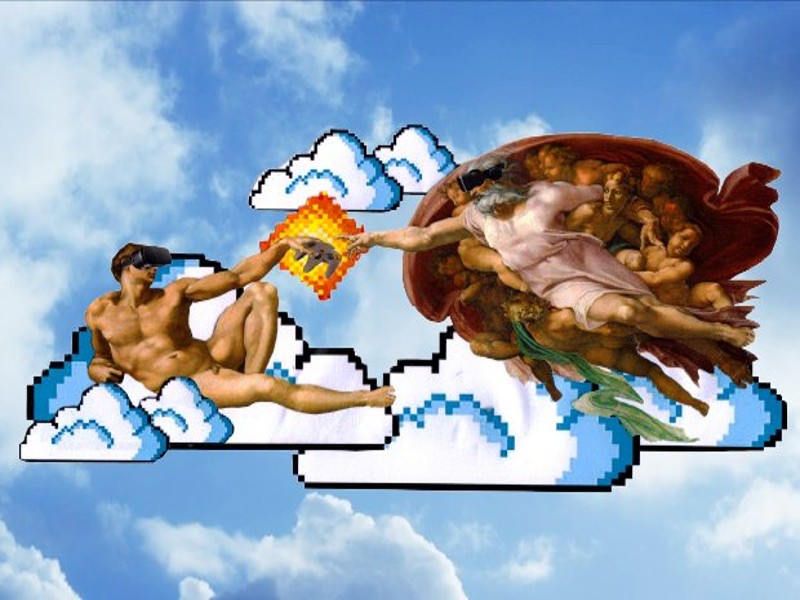By Socratis Santik Oglou,
Video games have shifted in purpose and application over the past 20 years. For years, video games have been researched, analyzed, and admired for their cultural and aesthetic worth, but games were no more than time fillers and competitive computer games, up until 1994. They contained most of the content they have today, like, images, sounds, and storyline, but the target audience was narrow, which resulted in many people dismissing the medium as just computerized games. The argument, which mainly starts with Roger Ebert, on who we are going to pay attention to later, is that if chess or basketball are not considered art, then neither should The Legend of Zelda or Madden Football. The video games as a form of art issue sparked by Roger Ebert, a well-known film critic, when back in 2006, when he battled against the perception of video games becoming art. He writes in his blog post titled Video Games Can Never Be Art: “No one in or out of the profession has ever been able to cite a game worthy of comparison with the great poets, filmmakers, and novelists”. This contributes to “game studies” not being taken as seriously as other cultural subjects like literature, music, and the visual arts. In academics, video games are stigmatized and are often disregarded or seen as having poor cultural value.
However, video games actually have the potential to be considered postmodern or conceptual art and, therefore, they should be seen from the same point of view, just like any other type of art.
Of course, not all games can be perceived as “art” or “high art”. But, at the end of the day, what is it that makes anything or a medium art? While here you will not find the answer on what art is, with a quick Google search you will come with answers like: “Art is the expression or application of human creative skill and imagination, typically in a visual form such as painting or sculpture, producing works to be appreciated primarily for their beauty or emotional power”, and “subjects of study primarily concerned with the processes and products of human creativity and social life, such as languages, literature, and history”.
Moreover, Andy Warhol said: “Art is everything you can get away with”, while Edgar Degas said: “Art is not what you see but what you make others see”.

While categorizing video games among those broad categories is simple, it is crucial to remember that not all games fit those requirements. For example, there is a difference when it comes to designers and artists. Designers create with the purpose to sell something and convey a specific message to the audience, whilst artists create something with no intention at all — except creating art. Designers want to create, whereas artists want to express themselves.
Video games constitute a medium. Artists produce 2D and 3D graphics, programmers “choreograph” all the moving elements, and authors develop a storyline and dialogues. The art is a mishmash of styles. In the game, players act and respond, while at the same time, games create feelings for individuals. It is an experience, a happening, a performance, a concept.
Roger Ebert says: “One obvious difference between art and games is that you can win a game. It has rules, points, objectives, and an outcome. [Someone] might cite an immersive game without points or rules, but I would say then it ceases to be a game and becomes a representation of a story, a novel, a play, dance, a film. Those are things you cannot win; you can only experience them”.
But what is art if you do not get to experience it? Are there no examples of movements in Art History that overthrew the rules, points, aims, and conclusions of the time’s art world? Also, if you think about it, both games and art have rules. For instance, to observe the artwork, you must move, see, use speech or touch — just like in games. All art must be interacted with by interpreting it. When witnessing art, interpretation is inescapable.
Ebert later revises his opinion to suggest that video games will never be high art. But, in actuality, high art is a hazy and ephemeral term. Back in the 19th century, the French Academy of Art rejected Impressionism, because it did not reflect the aesthetic ideals of the time. Almost everyone stated back then that the Impressionists were not artists. Instead, people nowadays flock to Van Gogh’s Starry Night, considering this Impressionistic artwork High Art.

Indeed, this pattern of pushing against the grain of the previous movement has resulted in Postmodern and Contemporary Art, where the pieces are so radical and obviously bizarre, that the typical person is once again exclaiming, “How could this be art?” or “I could easily do this”. Contemporary High Art is misinterpreted by the general public because, most of the time, it has to do with the concept — Conceptual Art; concluding that high art is clearly neither a single object nor a metric for determining the relevance, quality, or status of any specific medium or movement
Now onto the video games that are considered art by art critics and video game reviewers.
BioShock was nominated for multiple gaming awards for its depiction of a dystopian underwater metropolis and a malignant plutocrat, which took inspiration from George Orwell’s and Ayn Rand’s works. Also, the musical soundtracks of several games have also been praised. For example, the soundtrack for The Legend of Zelda: Ocarina of Time is influenced by jazz, Latin, even Arabic musical elements. These gaming soundtracks have become a staple of high-brow music. Games like Assassin’s Creed, Prince of Persia, and Tomb Raider all feature complex and compelling tales that have been adapted later into films and novels.
Honorable mentions include: Super Mario Bros (1985), Doom (1993), Final Fantasy VII (1997), Silent Hill 2 (2001), Killer 7 (2005), Portal (2007), Fallout 3 (2008), Amnesia: The Dark Descent (2010), The Walking Dead (2012), Grand Theft Auto V (2013), Mafia III (2016), The Last of Us Part II (2020), Before Your Eyes (2021).

Video games are the only type of media that allows the creator to personalize the creative experience while maintaining control. There are three distinct viewpoints in video games: the designer, the game, and the player. Those who play a game are following the author’s plot and are constrained by the rules’ frameworks. Yet, the experience can be entirely unique depending on the choices everyone makes. When you can look at someone else’s work and discover a personal connection to it, you have attained art.
To conclude, the gaming industry has grown and transformed more rapidly over the past 60 years than any other medium. Video games as an art form are hardly a new thing, but when we think of art, we instantly think of Van Gogh and Monet. Traditional definitions of art continue to dominate the popular consciousness, while game makers’ innovative efforts go unappreciated. One thing is certain: the medium has the capacity to develop into great art, and certain instances of and postmodern art may be found.
References
- An Argument That Video Games Are, Indeed, High Art, forbes.com, Available here
- Video Games Are One of the Most Important Art Forms in History, time.com, Available here
- Video games are an art form, honisoit.com, Available here
- The Case of Video Games, youtube.com, Available for watching here
- The Art of Video Games, americanart.si.edu, Available here




